Continuous PNAD
New PNAD TIC will investigate streaming, 5G, the Internet of things, applications and work from home
September 20, 2022 02h00 PM | Last Updated: September 23, 2022 10h29 AM

Last Friday (16), the IBGE announced, im Brasília, changes in the thematic module on Information and Communication Technology of the Continuous National Household Sample Survey - PNAD TIC. This new edition of 2022 will be into the field in the fourth quarter to identify the use of new technologies such as streaming, 5G and the coexistence with parabolic antennas, Internet of things (intelligent machines that connect with other machines); work from home, use of different types of applications for cell phones, and even new forms of work mediated by technology.
The technology topic is the result of a partnership between the Public Ministry of Labor and Unicamp. Besides data on work from home, other about activities performed using digital platforms, as it is the case of transportation, food and shopping apps, will also be collected. The idea is to investigate the impacts on work conditions and the process know as “uberization”.
The innovations were presented by Cimar Azevedo Pereira, Director of Surveys of the IBGE, after the release of data of PNAD TIC 2021. During the presentation of the 2021 survey, the special assistant for the Ministry of Economy, Rogério Boueri Miranda and the secretaries of ministries of Telecommunications (MCOM), Science and Technology and Innovation (MCTI), all of them wearing an enumerator vest, called attention to the relevance of the 2022 Population Census and to the fact that every citizen should welcome the enumerators.
“Treat the enumerators with courtesy” We need to have information about the country and it is of fundamental importance that the enumerators be welcome,” says Mr. Miranda.
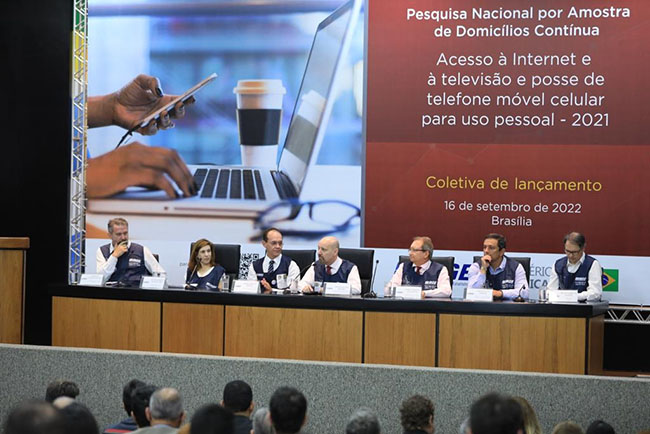
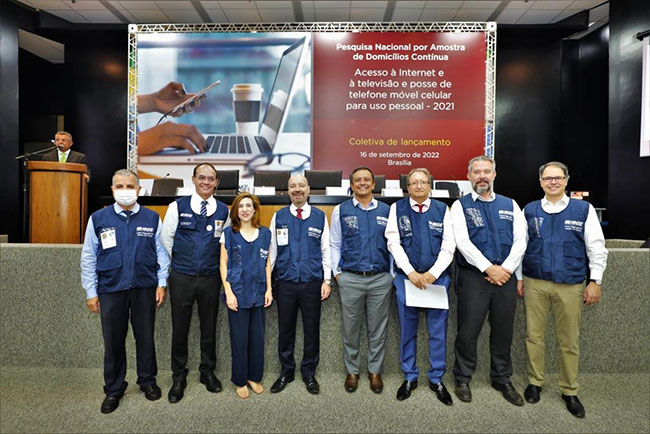
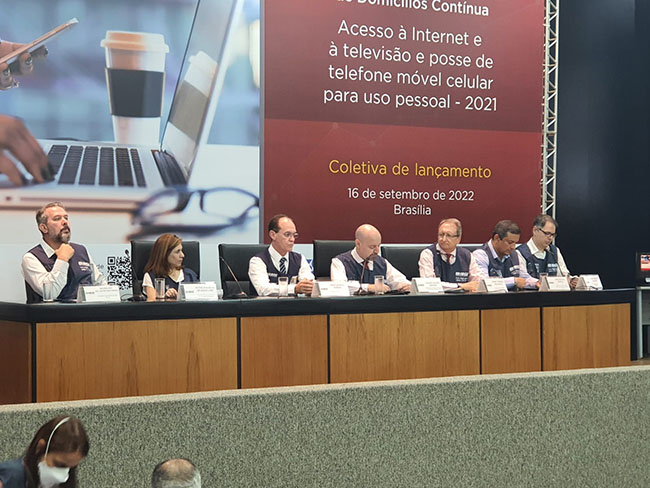

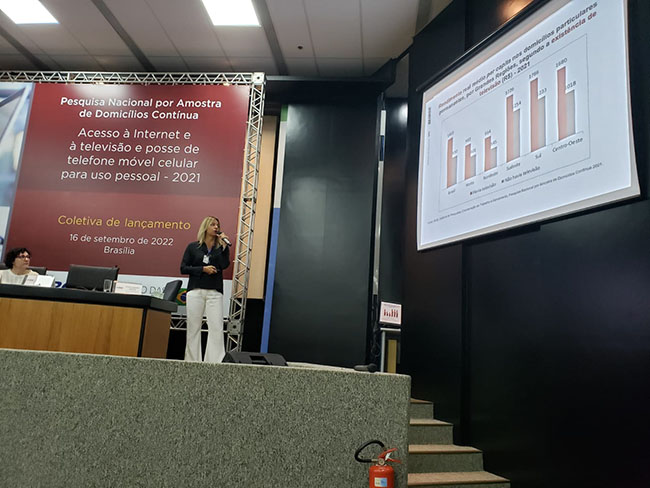
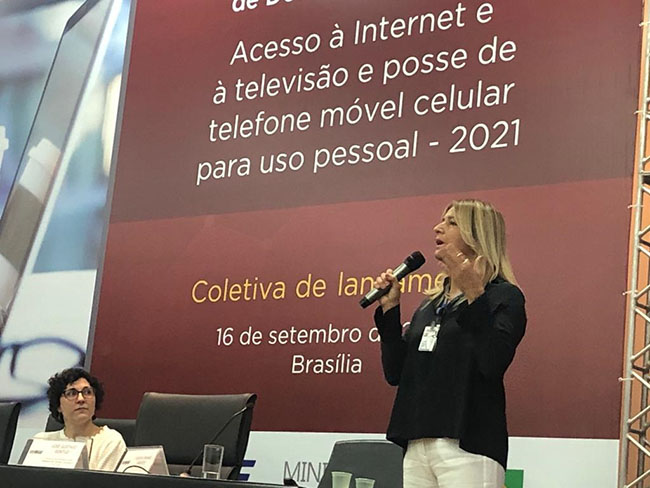
Three types of questionnire will be administered
Regarding the new PNAD TIC, Cimar Azeredo mentioned that the survey has reached its sixth edition as a single thematic module, and informs that PNAD is collected in every state.
Three questionnaires will be into the field in October: “Housing unit TIC”, “Persons TIC” and “Work from Home and Work using Digital Platforms”. We will investigate topics such as 5G, IoT, streaming and Internet use. These are data we missed and whose importance for investigation increased after Covid-19. We will measure the increase in the number of persons working from home, the advance in the use of ICT technologies in work from home, paid activities performed by means of digital applications and the status of these work relations,” Mr. Pereira highlights.
Among the changes in the housing unit module is the resumption of investigations of the use of radio, which has turned 100 years. An item inquires about the existence of a radio in the housing unit, though being part of another type of equipment, such as as radio alarm clocks, personal comouters and smartphones. Regarding parabolic antennas, investigation will cover the size of the antennas and whether they are being used for broadcast TV signal.
Questions about IoT will identify intelligent devices
“Regarding the Internet of Things, the survey inquires is the housing unit has any intelligent domestic device that can be accessed by means of Internet, such as cameras, air conditioners or refrigerators. This seems to be a type of difficult information to obtain, because these are still few items, but it is important to include them in the investigation. Another innovation is knowing if the housing unit has access to any paid streaming services. As for the type of Internet connection, 5G has been added to the survey,” says Mr. Pereira.
Alessandra Brito, PNAD TIC analyst, explains that, regarding the main reason for lack of access to Intenet by the housing unit, due to significant lack of interest, the investigation was expnaded to find out other reasons, such as lack of necessity, lack of time and a concern about security.
The ICT module on persons inquires how often the Internet is accessed from anywhere (home, work, school), the purpose of use (e-mail, calls, shopping, bank access); if the access is free (from squares, parks, libraries, service stations). New questions have been included because our objective is to find out if the person is using the Internet even without noticing it, for example, when sending an e-mail or using WhatsApp,” says analyst Alessandra Brito.
Work conditions and relations mediated by platforms
The third module is the result of a partnership between Unicamp and the Public Ministry of Labor, which requested from the IBGE the inclusion in Continuous PNAD of a specific module about labor in digital platforms. Mr. Pereira informs that the IBGE signed a technical cooperation agreement with both instituions.
“We are going to investigate work from homr and work using digital platforms. According to the International Labor Organization (ILO), work from home is work done out of one’s regular place of work, that is, in an alternative location – their housing unit, a coffee shop, hotels, co-working areas; whereas working using digital platforms is work from home using the Internet. Therefore, one’s being employed or unemployed and their employment status will be considered, whether the person is an employee or a self-employed worker. Besides the use of electronic devices,” says the director.
In the case of work by means of digital platforms, the idea is to identify, in the case of the only or main job, the role, the power and the influence of applications in the excution of tasks, in pricing, in schedules, in the choice of clients and in promotion strategies, for example. It will also assess client prospecting by means of applications, sales on e-commerce platforms, etc.” “We will build important indicators about work relations and conditions. ILO revised the international classification of employment status and now monitors this topic, warns the IBGE’s director.
Ministries highlight relevance of PNAD TIC for public policies
Since its first edition in 2013, PNAD TIC has been used to guide the choice of public policies in the field of technology at many governmental spheres. This strategic contribution was reaffirmed during the presentation of the 2021 edition of PNAD TIC, which had gone into the field in Q4 last year.
In 2021, the survey disclosed many trends, such as the increasing use of television sets to access the internet in the housing unit, exceeding the number of personal computers used as a second option after the cell phone; the reduced ownership of personal computers, tablets and fixed telephone lines; and the increase of broadband use, which has surpassed that of mobile broad band due to the pandemic and to the expansion of optical fiber in Major Regions such as the North and Northeast.
“We were expecting important advances in the indicators of PNAD TIVC 2021, but data show that with statistical accuracy. That is not a narrative, but a group of evidences presented by the main household survey in Latin America. This release is important so that we can understand labor-related changes and those effected after peeople’s experience with Covid-19,” Mr. Miranda, special assistant for economic affairs in the Ministry of Economy, highlights.
He observed that there were so many changes that the coming module of PNAD TIC, which will go into the field in Q4 2022, had to be reformulated. “We will include aspects relative to the changes observed in the last few years - such as the implementation of 5G in the country, the Internet of things and video streaming - besides expanding the investigation on Internet use.”
According to the executive secretary of the Ministry of Science, technology and innovation, Johnny Ferreira dos Santos, the project PNAD TIC is highly relevant vecause the survey shows the advances of ICT policies in the country.
“Continuous PNAD, as a whole, is a very important work in itself, and the maintenance of the ICT module is of fundamental importance. We have a digital governmental agenda aimed at the improvement of public services, and it is fundamental to have proper connectivity, high-quality mobile services and access to the Internet. The pandemic accelerated the demand for these services. It is important that these policies be improved, and there is nothing better that the IBGE to illustrate these needs in a dynamci way, by means of PNAD TIC,” says the secretary.
The secretary of entrepreneurship and innovation of the MCTI, José Gustavo Gontijo, observed that the country manages the Brazilian Digital Transformation Strategy (E-Digital), and the changes revealed by PNAD TIC will help in the development of public policies with the Internet of Things. “We have worked aiming at the development of broadband and digital inclusion in the country, and that can only help us grow,” Mr. Gontijo highlights.
IBGE guides diagnosis and anticipates trends in the field of technology.
The telecommunications secretary of the Ministry of Communications (MCOM), Nathalia Almeida de Souza Lobo, highlighted that the IBGE surveys guide every diagnosis and the revision aimed at the improvement of public policies. That occurred in the 5G auction, when investments of telecommunication companies were defined.
“We feel the absence of information, as it was the case in 2020, when PNAD TIC did not go into the field. The information is regularly used and tells us much about the use of telecommunications. The survey is our main indicator for the Pluriannual Plan (PPA) and the main instrument in a our governmenatl telecommunications strategy We use the indicators of number of housing units with broadband in the country for our public policies. Besides the PPA, the indicator was of 74% of the housing units, in PNAD TIC 2019, it reached 84%. In 2021, our aim was 85% and, for 2021, it is 91%,” Ms. Lobo explains.
The Broadcasting secretary of MCOM, Maximiliano Salvatori Martinhão, says that the IBGE is a partner in the country’s public policies, as it provides data that help reach the objectives our administration wants from public services. He even said that the MCOM deals with people’s favorite services.
“In broadcasting, we already had more than 90% of the housing units with a television or radio. Now more than 90% of the Brazilian housing units have access to the Iternet. That changes lives. Therefore, its is important to have a survey such as PNAD TIC, which has helped us since 2016. In the field of broadcasting, these data will be of fundamental importance for two policies. One is related to the change from analogical to digital TV up to 2023. We will have to hand out kits. Also as a consequence of the 5G auction, we will have satellite television signals changing from C band into KU band.” KU band has no interference from the 5G service.
The Counselor for the National Telecommunications Agency (Anatel), Artur Coimbra de Oliveira, states that the IBGE is one of the most relevant statistical bodies in the world.
“I dare say, regarding the telecommunications sector, it is the most relevant one, not only because of methodological consistency in the definition of internatiaonally recognized indicators, but also because it indicates technological trends long before other statistical agencies around the world. Thanks to the IBGE we have reached a very precise and consistent diagnosis, of television digitization with a clear view of how many housing units had analogical TV. And that families were gradually leaving computers behind to access the internet from their cell phones, something that it took other statistical agencies longer to notice. The IBGE has found perfect balance between methodological consistency in time and adaptation to such a dynamic sector,” adds the Anatel counselor.




















